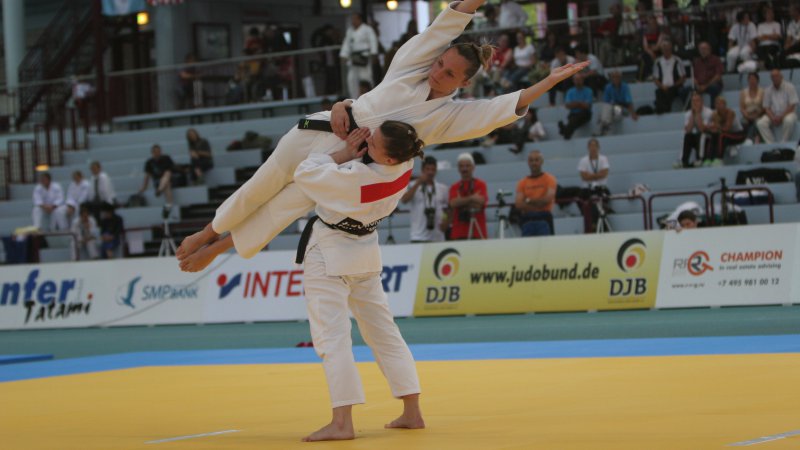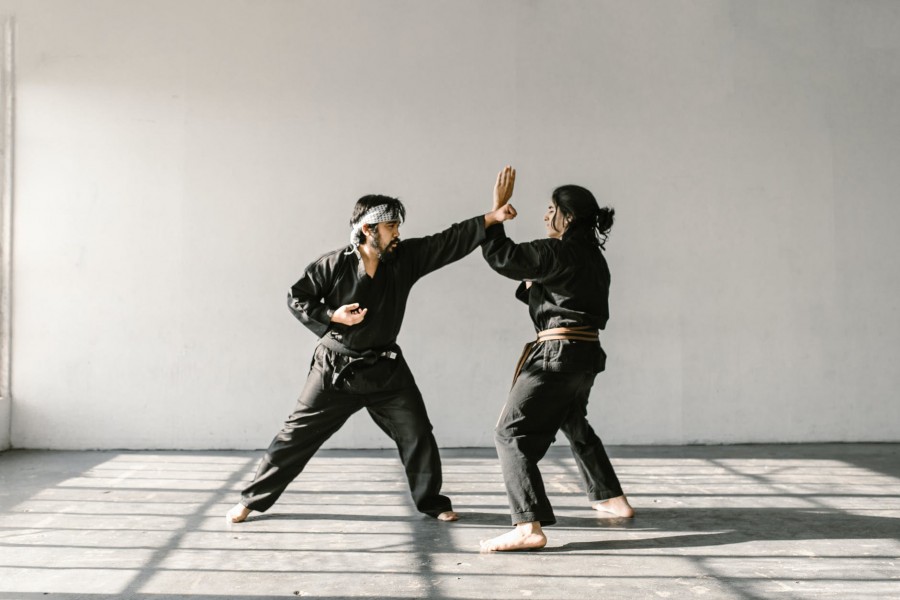The judo It is a sport practiced around the world, which has a rich history and culture. The term, which means smooth path in Japanese, is part of the concept created at the end of the 19th century, and has become one of the most practiced sports in Brazil and in the world.
In addition, since 1984 the Brazilian judoka team has achieved excellent results in championships and Olympic games, guaranteeing a series of medals for the country in this modality in various competitions.
Índice de Conteúdo
Learn more about the history of judo
Judo was created from the analysis of another art, jiu-jitsu. Its creator, Jigoro Kano, sought to develop a defense technique, just like a alarm monitoring inside a residence, in which strength and balance were used against the opponent.
Officially, judo was born in 1882, the year Kano founded the Kodokan Institute for the study and practice of judo. The term is also loaded with symbology, since ok means study or method, do means way and kan Institute.
Kano went beyond the sport and created a whole philosophical line for judo, based on the concept of ippon-shobu, which means the fight for the perfect point, as well as a moral code for the sport.
The inventor of judo still gathered varied fighting styles in its creation, not restricting the modality to men with vigor. In this way, the sport ended up gaining more stage and popularity around the world.
In 1918, the first judo club was founded in Europe, starting the process of spreading around the world. In Brazil, this arrival took place in 1922 with Japanese immigrants, who always had a competency mapping to spread sportsmen to other countries.
However, in the beginning, there were no organizing institutions. It was only in the 1930s that immigrants arrived willing to organize martial arts, improving judo and kendo practices in the national territory.
Normally, the sport was practiced in Japanese colonies, but soon judo began to spread in Brazil, being integrated into the control of the Brazilian Confederation of Pugilism until the creation of its own confederation.
In 1964, the martial art was introduced into the Olympic sport, as one of the novelties in the Tokyo Games. This entry encouraged the organization of several institutions interested in working with this type of resource.
For greater control of the athletes, the Brazilian judo confederation was founded in 1969, although it only had its real recognition in 1972, when it won its first medal in the Olympic games.
Since then, the sport has established itself as one of the main ones in the country, bringing Olympic medals in every edition of the games since 1984, which makes this one of the main Olympic sports in the country.

Know some rules of judo
As in any competitive sport, the main objective of a judo tournament is to win a fight, whose maximum duration is four minutes.
However, it is important to emphasize that the fight can be interrupted at any time if one of the combatants reaches the Ippon, a kind of perfect blow.
Furthermore, the fight is also ended immediately if any of the contestants receives three shidos, which are infractions throughout the fight.
If there is a tie in the fight, the dispute proceeds to the method golden score, in which the judoka who scores the first score after releasing extra time is the champion. In addition, the most common movements in judo are:
- Ippon;
- Waza-ari;
- Koka;
- Yuko.
In 2018, judo scores were restricted to two movements, Ippon and Waza-ari. Koka and Yuko became extinct from Olympic competitions, with Yuko being absorbed by Waza-ari.
In this way, a judoka who manages to apply two of this movement receives a score equivalent to Ippon, winning the fight and continuing in the competition, eventually reaching the gold medal.
The only way for the fight to end with punishment is if the athlete accumulates three shidos. They are not uploaded to the golden score or even computed as a tiebreaker. All unsportsmanlike attitudes and lack of combativeness are considered shidos.
In addition to the aforementioned, Waza-ari is when an opponent falls on his side, or with half his back on the ground. In addition, immobilization for at least 10 seconds is also considered a Waza-ari. The score is worth half an Ippon.
The Ippon, which would represent the knockout in judo, is considered the perfect blow. When one of the opponents achieves this result, the fight is over. To be able to set up an ippon, it is necessary for the opponent to land on the mat with his back complete.
In addition, immobilizations that last 25 seconds or that make the opponent give up are also considered Ippon, so it's important that you know how to use your movements for this type of activity.

See the equipment used for judo
The only specific equipment for the practice of judo is the correct kimono, known as judogi. It has a series of elements that are interconnected to create the appropriate dress, as with the making professional uniforms.
In addition, female judo athletes must wear a white shirt over the judogi, mainly to ensure more tranquility for the competitors, without having to worry about clothing for their actions.
It is up to each coach and athlete to check their judogi, especially before entering combat. That's because if a judge identifies irregularities with the clothing, you can be disqualified and receive the Hansoku-Make immediately.
In addition, the judogi must follow some important parameters to comply with the rules stipulated by the bodies responsible for these athletes, ensuring greater visibility and a greater impact as well.
Of course, in addition to the uniform, it is important to be concerned with the entire space where the practice will be held, ranging from details from the structure used, the ventilation of the space, even the thermometer calibration and other equipment that may be used.
So, take a look at some of the most commonly used equipment in the following list:
1 - Wagi
The wagi is a piece, which is also part of the garment, and which must completely cover the buttocks, in addition to having at least 10 centimeters between the lower extremity and the athlete's knee.
The Wagi's lapels also need to be more than 20 centimeters apart when crossed at the navel, with each lapel no more than one centimeter thick, while its width is around 5 centimeters.
The mahas must completely cover the judoka's arms, including the wrist. This check should be performed with the arms straight, with the hands flat forward.
In addition, the Sokuteiki must slide completely into the sleeve, without any kind of difficulty in performing an activity. This item is as important as the alignment machine used within an industry.
2 - Shitabaki
In this case, the item corresponds to the pants used by the athletes, and the distance between the shitabaki bar and the ankle must be smaller or up to five centimeters.
In addition, there must be a distance of about 15 centimeters from the knee to the shitabaki, mainly so that it is valid for the competition at the time of the fight.
Remember to pay attention to these details. After all, everything is very important, going from the acoustic treatment from the competition space, to the safety of the competitors with their clothing.
3 - Hello
The band that represents the athlete's rank is called obi, and its thickness must be up to 5 millimeters. In addition, it is important that the distance between the tip of the obi and the knot is approximately 30 centimeters.
Another interesting point about this is that it is a common mistake to consider that the black belt is the highest rank a judoka can get. Although the color symbolizes mastery in the martial art, there are still two other colors for the obi.
The first is red and white and the second is completely red, maximum grade in the sport.
4 - Shirts for women athletes
In women's competition, in addition to judogi, a white shirt is required. This attire is mandatory for competition, and must meet certain standards to be accepted, as with the ventilation ducts of the space in question.
The first point is that it must be completely white. This means that shirts with prints or stains that can be highlighted will not be accepted. Also, they must be short-sleeved, round-neck t-shirts.
It is not allowed to use these shirts as commercials, even for visual identification. For this, it is necessary to use patches on the judogi itself, identifying the federation's shield or sponsors and advertising.
The article is still halfway through, but we recommend also reading:
Final considerations
Judo is a very popular sport in Brazil and in the world, and because of that, every day it attracts new people interested in practicing this martial art that presents discipline and philosophy along with a physical activity.
Therefore, many athletes end up opening gyms and schools to teach the art, of course, always with all the necessary items, going from the surface treatment to general space security details.
In addition, there is still little public and private incentive for these athletes, who still achieve increasingly positive results for the country and remain firm in the search for a better position in international competitions.







